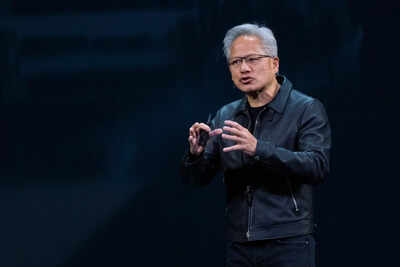
The Department of School Education & Literacy (DoSE&L) under the Ministry of Education has announced a landmark move to make Artificial Intelligence (AI) and Computational Thinking (CT) a mandatory part of the school curriculum from Class 3 onwards, starting in the 2026–27 academic session. Secretary Sanjay Kumar described the initiative as a major step toward treating AI as a basic universal skill, much like learning about The World Around Us (TWAU). The integration of AI and CT aligns closely with the National Education Policy (NEP) 2020 and the National Curriculum Framework for School Education (NCF SE) 2023, signalling a deliberate effort to prepare students for a future deeply influenced by intelligent systems.During a stakeholder consultation held on October 29, 2025, representatives from CBSE, NCERT, KVS, NVS, and external experts discussed the structure and content of this new curriculum. The CBSE has formed an expert committee led by Prof. Karthik Raman from IIT Madras to develop the AI & CT framework. Kumar emphasised that while the curriculum must be broad-based and inclusive, it should also remain flexible enough to evolve with changing technological and social needs. “Every child’s distinct potential is our priority,” he stated, highlighting the Ministry’s focus on balancing innovation.How AI education evolved in Indian schoolsThe introduction of AI into Indian classrooms has been gradual but strategic, ensuring that schools, teachers, and students build familiarity with the technology before it becomes mandatory.
This steady expansion reflects CBSE’s intention to embed AI education organically rather than abruptly. By the time it reaches the primary level, teachers and institutions will already have several years of experience integrating AI into lesson planning and classroom practice.Building blocks for responsible implementationThe Ministry’s plan extends beyond syllabus design. Resource materials, handbooks, and digital content are expected to be finalised by December 2025, ensuring adequate preparation time for schools. Teacher training will form the backbone of this transition, conducted through NISHTHA and other institutions, with modules that are both grade-specific and time-bound. A Coordination Committee under NCF SE will oversee collaboration between NCERT and CBSE, ensuring smooth integration and consistent quality across schools.Secretary Kumar noted that while cross-national perspectives can provide useful insights, India’s AI curriculum must remain specific to its own developmental priorities. The focus, he said, should be on ethical, inclusive, and purposeful use of technology. The curriculum will aim not only to teach students how AI works but also to explore how it can serve the public good — a philosophy encapsulated in the guiding idea of “AI for Public Good.”
Essential guardrails AI in classrooms
As AI becomes a classroom companion, its benefits must be balanced with thoughtful safeguards. Teachers, parents, and policymakers share responsibility in ensuring that technology enhances — rather than replaces — the learning process. Schools must take care to distinguish between assistance and outsourcing. When AI can generate explanations or draft feedback instantly, there is a risk that students might skip the cognitive steps essential to genuine understanding. Tasks should therefore encourage visible reasoning through annotations, rough work, oral defences, or written reflections that AI cannot convincingly simulate.Another major concern lies in data privacy. Children generate sensitive behavioural data as they type, read, or speak to AI-enabled devices. To address this, default settings should limit data collection, keep information local whenever possible, and adopt short retention periods. Parents and students must also be informed, in clear language, about what data is collected and how they can opt out.The risk of bias and misinformation remains equally significant. Generative models can produce fluent but incorrect or subtly biased outputs. To prevent such issues, AI classroom systems should include built-in citation prompts, source cross-checks, and teacher-controlled guardrails that restrict certain outputs for younger learners. Importantly, educators must retain final authority over grading and feedback — AI may assist, but human judgement remains the last word.
Framework for ethical and effective AI use in schools
To translate these principles into daily practice, schools can adopt a structured framework that defines both purpose and process.
This framework underscores a key idea: AI should amplify human teaching, not replace it. Schools that treat prompting and model interaction as new forms of literacy — akin to writing or coding — will gain far more educational value than those treating AI as a simple shortcut.AI literacy and the future of workThe expansion of AI education is closely tied to shifts in the global job market. Automation continues to reshape employment patterns, creating both anxiety and opportunity. Learning AI from the primary level is designed to equip students not merely to use these tools but to understand their logic, ethics, and limitations. This kind of early exposure cultivates computational thinking — the ability to break down problems, recognise patterns, and design adaptive solutions.Recent labour data underscores the urgency of this approach. In 2025 alone, more than 10,000 layoffs in the United States were directly linked to generative AI adoption, while over 27,000 tech job losses since 2023 were attributed to automation-related restructuring. Yet the same technologies driving displacement are also creating new, high-value roles. According to PwC’s Global AI Jobs Barometer 2025, workers possessing AI-related skills earn an average 43 per cent higher wage premium. Labour analytics firm Lightcast reports that job listings mentioning AI skills advertise salaries about 28 per cent higher than comparable roles without them. Meanwhile, the World Economic Forum’s Future of Jobs Report 2025 projects the creation of 170 million new jobs this decade, with a net gain of 78 million after accounting for automation.This dual reality — job loss alongside job creation — explains why India’s AI curriculum emphasises “AI for Public Good.” The Ministry envisions AI literacy as essential preparation for a workforce where human-AI collaboration is standard practice. By teaching students to work transparently with AI, to declare assistance, and to show their own reasoning process, the curriculum aims to create professionals who can complement automation rather than compete with it.The road aheadThe success of this initiative will depend on the architectural choices schools make now. Well-designed implementation — combining teacher capability, clear policies, and ethical guardrails — can turn AI into a genuine force multiplier for learning. Schools that establish transparent frameworks, measure real gains, and invest in teacher training will navigate this transition effectively.Ultimately, AI is neither friend nor foe; it is a mirror of our educational values. In thoughtful hands, it will widen access to feedback, personalise practice without isolating learners, and free teachers to focus on what only humans can do — care, judgement, and inspiration. But without proper boundaries and design, the same technology could easily flatten curiosity and fragment learning. The coming years will determine which of these futures India’s classrooms choose to build.






